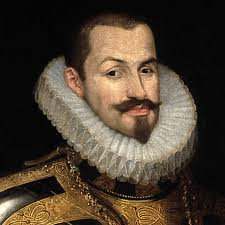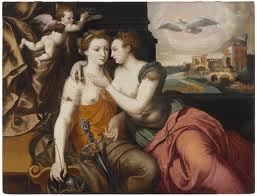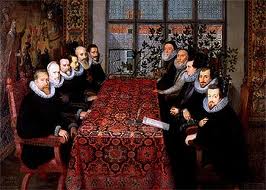Mannerism: Juan Pantoja
Juan Pantoja de la Cruz was a Mannerist Spanish painter who specialised in the painting of Royal Court portraits. His paintings are considered to be some of the best examples of the height of the Mannerist period.
Juan Pantoja de la Cruz (1553-1608)

Juan Pantoja de la Cruz was born in Valladolid in Spain. At a young age, he moved to study in Madrid as a disciple of the famous Spanish painter, Alonso Sánchez Coello. It is widely believed therefore that Juan helped out his master with some of the paintings for the Royal court. It is also thought that when he finished his training with Coello, that Juan Pantoja de la Cruz continued to work in Coello’s workshop.
In 1587, Juan Pantoja de la Cruz married his wife and the following year it is documented that he set up as an independent painter which coincides with the date of his master’s death. Cruz then took over his former master’s workshop and began working as the Royal Court painter for King Philip II of Spain, although he didn’t receive an official title until 1596. Cruz painted many paintings of the Spanish King, including one which depicted the King wearing a black outfit, complete with hat and cape, which was painted for El Escorial around 1594.
When Philip III came to the throne in 1598, Juan Pantoja de la Cruz was made the Official Court painter. The Royal Court then moved to Juan’s hometown of Valladolid in 1601, and naturally Cruz moved as well, settling in the city for many years.
During this time, he also became known as the painter of the other Upper Spanish Classes and nobility. His first paintings of members of the nobility were very traditional such as the portraits of the Duke of Lerma and Don Diego de Villamayor. However by the time he came to paint the portrait of the Knight, Santiaguista in 1601, Juan Pantoja de la Cruz was painting in a much freer style, involving a deeper treatment of light and Naturalism.

Juan Pantoja de la Cruz also painted many religiously themed paintings during his lifetime which tended to be very realistic and dramatic. Some of his most famous religious paintings include the ‘Santa Leocadia’ in the Cathedral of Córdoba, 'la Resurreción' (The Resurrection) in Hospital of Valladolid, and the ‘Nacimiento de la Virgen’ (Birth of the Virgin) in the Prado Museum.
It is also believed that Juan Pantoja de la Cruz also painted many ceiling frescoes and still-lifes, however these paintings have not withstood the test of time. At the time of his death, Juan Pantoja de la Cruz was painting the ceiling of the Room of Paintings in the Pardo Palace, with the collaboration of the artist Francisco López. He also supplied his Royal clients with mythological and historical paintings alongside his portrait work.
Juan Pantoja de la Cruz's style has been described as being one of the best examples of the highest point of Mannerist painting. He originally continued the traditional styles used in Spanish Royal Court paintings which often led art historians to describe him as a dull painter, as his work was not as flamboyant as some of the Italian masters.

However in the more famous and developed paintings by Juan Pantoja de la Cruz, he used the contrast between light and darkness as well as shadow in order to create a more geometrically sophisticated piece. His attention to detail is also worth highlighting as Juan was particularly adept at painting jewellery and embellishments on the clothes of his subjects. Furthermore, the hands of his figures would also be extremely detailed yet subtle at the same time.
Many writers from Juan Pantoja de la Cruz's era, such as Lope de Vega and Francisco de Quevedo, praised him as being a great Spanish artist. Lope de Vega wrote of Juan Pantoja de la Cruz that 'Dio casi vida y alma a un rostro mudo' (He gave life and soul to a dull face), in his work 'La hermosura de Angelica' (The Beauty of Angelica) in 1602.
